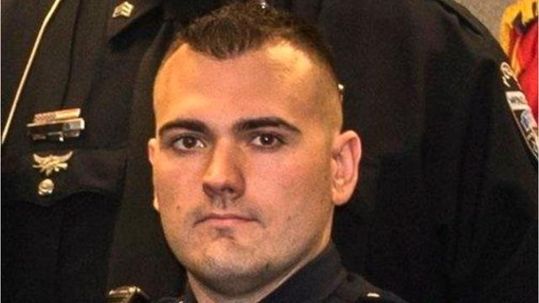
The Winslow Arizona police officer who shot and killed a Native American woman, has resigned from his position. Officer Austin Shipley shot and killed Loreal Tsinge, claiming that he “feared for his life,” which “forced” him to shoot her. Despite the fact that the woman posed little threat to Shipley, who had alternatives to killing her, the prosecutor has declined to bring charges. Shipley will unlikely work in law enforcement again, making this a small win for justice and the community.
According to a local news station, the department had concluded its internal affairs investigation, and had met with Shipley in regards to their findings. After the meeting, Shipley made the decision to resign. A more factual description would be that the department allowed Shipley to resign in lieu of termination. This practice allows the officer to keep his law enforcement certification and potentially seek employment elsewhere. This trend, however, is seemingly being curbed, as officers who draw attention to themselves in high profile cases are more often than not disappearing into obscurity, unable to find employment without causing a media frenzy.
The Native American community has become more united in recent years, unfortunately though, for all the wrong reasons. Prior to the Dakota Access Pipeline – which has brought together a vast number of indigenous tribes – the community came together over the large numbers of Native Americans being killed by police. In 2014, the racial group most targeted in the ages of 20-24 were African Americans, followed by Native Americans, aged 25-34. Fast forward to 2016 and Native Americans have taken over as the most likely to be killed by police. Loreal Tsinge was just one example of a case where a Native American was killed by police, and went largely unreported by the mainstream media.
Tsinge was armed with a pair of small scissors when she was gunned down. Shipley had stopped her, as she matched the description of a shoplifting suspect in the area. Tsinge, who was no more than five foot five, should have been perceived as little threat to the armed and trained officer. Shipley decided to shoot Tsinge five times instead of reasoning with her, who was in an obvious time of crisis. Shipley was another cop in a line of rookie officers involved in shootings this year, having only served three years as an officer. All too often the police screening process fails to identify the officers who seem to have a lust for power and control.
Despite the local district attorney’s failure to prosecute, the Department of Justice has taken up their own investigation, which may yield fruitful results. The family has also filed a federal civil rights violation law suit against the department and Shipley himself. Having parted ways with the department while under investigation, it is doubtful the department will cover his share of the $10.5 million in damages being sought by the family. Liability in this case, will fall on the department somewhere, however, as Shipley had been reported by two fellow officers for being too quick to go for his weapon. One of his training officers had also recommended that the department not retain him after he completed the training program.
Shipley’s retention could be explained by short staffing, which often results in hiring less than ideal candidates. The result of that is obvious. Being that the department was warned by numerous officers of Shipley’s behavior, the family is likely to see a hefty settlement.
Sources: Cop Block, Fusion.
This article (Cop Who Killed Native American Woman Resigns, Department of Justice Investigation Continues) is a free and open source. You have permission to republish this article under a Creative Commons license with attribution to the author and AnonHQ.com.








